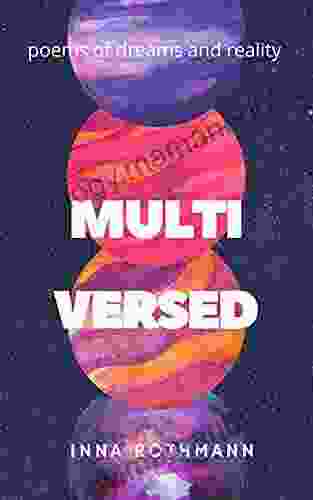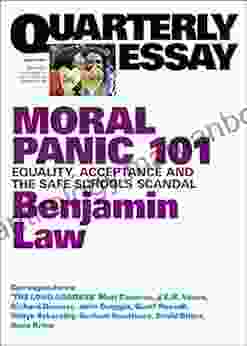Saxon Dawn: Wolf Brethren - Unveiling the Enigmatic Anglo-Saxon Warrior Cult

4.3 out of 5
| Language | : | English |
| File size | : | 3818 KB |
| Text-to-Speech | : | Enabled |
| Screen Reader | : | Supported |
| Enhanced typesetting | : | Enabled |
| Word Wise | : | Enabled |
| Print length | : | 212 pages |
| Lending | : | Enabled |
In the twilight of Anglo-Saxon England, amidst the echoes of clashing swords and the whispers of ancient runes, emerged a shadowy warrior cult steeped in pagan mysticism and martial prowess - the Wolf Brethren.
Like phantoms from a forgotten era, the Wolf Brethren have left behind scant historical traces, their existence shrouded in a veil of legend and speculation. Yet, through the meticulous excavation of ancient burial mounds and the analysis of enigmatic artifacts, archaeologists and historians have pieced together a tantalizing glimpse into this enigmatic brotherhood.
Origins and Beliefs
The origins of the Wolf Brethren are murky, shrouded in the mists of pre-Christian England. Some scholars trace their lineage back to the pre-Roman Iron Age, suggesting a continuity of pagan beliefs and warrior traditions among the Germanic tribes that inhabited the British Isles.
Central to the Wolf Brethren's信仰 was the veneration of Odin, the All-Father of Norse mythology, and his chosen warriors, the Valkyries. These fierce maidens would descend from the heavens to the battlefields, carrying fallen warriors to Valhalla, the realm of the slain, where they would feast and prepare for the final battle of Ragnarok.
The Wolf Brethren saw themselves as the earthly embodiment of Odin's chosen, destined to fight with unmatched ferocity and unwavering loyalty. They believed that by emulating the wolf, a creature renowned for its strength, pack mentality, and predatory instincts, they could embody the qualities of a true warrior.
Rituals and Practices
The Wolf Brethren's practices were as enigmatic as their beliefs. Historical accounts and archaeological evidence suggest that they engaged in a variety of rituals and observances designed to strengthen their physical and spiritual prowess.
One such practice was the ritual consumption of wolf flesh. By ingesting the meat of their totem animal, the Wolf Brethren believed they could absorb its strength and ferocity. Archaeological evidence from a mass grave in Lincolnshire, England, revealed traces of wolf bones amidst the remains of fallen warriors, suggesting the ritualistic practice of wolf consumption.
Another important ritual was the "wolf dance," a frenzied display of martial prowess and spiritual ecstasy. Performed in dark forests or isolated clearings, the wolf dance would involve the warriors donning wolf skins, howling, and engaging in mock battles. The ritual served as a form of spiritual preparation for combat, fostering a sense of unity and ferocity among the brethren.
Archaeological Evidence
Despite the paucity of written records, archaeological discoveries have played a pivotal role in shedding light on the Wolf Brethren. One of the most significant finds was the Sutton Hoo ship burial, excavated in 1939. This extraordinary burial mound contained the remains of a high-ranking Anglo-Saxon warrior, accompanied by a wealth of artifacts, including a magnificent gold helmet adorned with wolf masks.
The helmet, known as the "Sutton Hoo Helmet," is a masterpiece of Anglo-Saxon craftsmanship. Its intricate design features two wolf masks flanking a central figure, believed to represent Odin. The helmet's symbolism, along with the presence of other wolf-related artifacts in the burial, strongly suggests that the deceased warrior was a member of the Wolf Brethren.
Other archaeological evidence includes the discovery of wolf pendants, brooches, and amulets, often associated with burials of Anglo-Saxon warriors. These artifacts provide further testament to the widespread veneration of the wolf among the warrior class and their association with the Wolf Brethren cult.
Legacy and Influence
The Wolf Brethren faded into obscurity with the rise of Christianity and the gradual decline of paganism in Anglo-Saxon England. Yet, their legacy lived on in the oral traditions and literature of the period.
The epic poem Beowulf, a masterpiece of Anglo-Saxon literature, features a character named Unferth who is described as a "wolf-thane," a possible reference to the Wolf Brethren. Unferth's character embodies the traits of a fierce warrior, emphasizing the lasting influence of the Wolf Brethren ideal on the Anglo-Saxon psyche.
In contemporary times, the Wolf Brethren have inspired interest and fascination among historical reconstructionists and modern-day pagans. Groups dedicated to the study and practice of Anglo-Saxon warrior traditions have emerged, seeking to revive the ancient rituals and beliefs of the Wolf Brethren.
Saxon Dawn: Wolf Brethren is a captivating journey into the enigmatic world of the Anglo-Saxon warrior cult. Through the analysis of historical accounts, archaeological discoveries, and cultural legacies, we gain a glimpse into the beliefs, practices, and significance of this shadowy brotherhood. The Wolf Brethren stand as a testament to the enduring power of ancient warrior traditions, the allure of the supernatural, and the resilience of pagan beliefs in the face of religious transformation.
4.3 out of 5
| Language | : | English |
| File size | : | 3818 KB |
| Text-to-Speech | : | Enabled |
| Screen Reader | : | Supported |
| Enhanced typesetting | : | Enabled |
| Word Wise | : | Enabled |
| Print length | : | 212 pages |
| Lending | : | Enabled |
Do you want to contribute by writing guest posts on this blog?
Please contact us and send us a resume of previous articles that you have written.
 Top Book
Top Book Novel
Novel Fiction
Fiction Nonfiction
Nonfiction Literature
Literature Paperback
Paperback Hardcover
Hardcover E-book
E-book Audiobook
Audiobook Bestseller
Bestseller Classic
Classic Mystery
Mystery Thriller
Thriller Romance
Romance Fantasy
Fantasy Science Fiction
Science Fiction Biography
Biography Memoir
Memoir Autobiography
Autobiography Poetry
Poetry Drama
Drama Historical Fiction
Historical Fiction Self-help
Self-help Young Adult
Young Adult Childrens Books
Childrens Books Graphic Novel
Graphic Novel Anthology
Anthology Series
Series Encyclopedia
Encyclopedia Reference
Reference Guidebook
Guidebook Textbook
Textbook Workbook
Workbook Journal
Journal Diary
Diary Manuscript
Manuscript Folio
Folio Pulp Fiction
Pulp Fiction Short Stories
Short Stories Fairy Tales
Fairy Tales Fables
Fables Mythology
Mythology Philosophy
Philosophy Religion
Religion Spirituality
Spirituality Essays
Essays Critique
Critique Commentary
Commentary Glossary
Glossary Bibliography
Bibliography Index
Index Table of Contents
Table of Contents Preface
Preface Introduction
Introduction Foreword
Foreword Afterword
Afterword Appendices
Appendices Annotations
Annotations Footnotes
Footnotes Epilogue
Epilogue Prologue
Prologue Griff Hosker
Griff Hosker Nicola De Brun
Nicola De Brun Clare Goodwin
Clare Goodwin Pat Nicholson
Pat Nicholson Kindle Edition
Kindle Edition Porsha Olayiwola
Porsha Olayiwola Jesse Tyler Ferguson
Jesse Tyler Ferguson Elle Marr
Elle Marr Peter Gunn
Peter Gunn James Ottar Grundvig
James Ottar Grundvig Rm Vaughan
Rm Vaughan Francisco De Rojas Zorrilla
Francisco De Rojas Zorrilla Bernard Knight
Bernard Knight Johnnie Gentle
Johnnie Gentle Lee A Smith
Lee A Smith Roger Hargreaves
Roger Hargreaves Jlh Tavares
Jlh Tavares Linda Caputi
Linda Caputi Gilbert G Gonzalez
Gilbert G Gonzalez April Laugh
April Laugh
Light bulbAdvertise smarter! Our strategic ad space ensures maximum exposure. Reserve your spot today!

 Gabriel MistralMultiversed Poems: An Exploration of the Uncharted Realms of Dreams and...
Gabriel MistralMultiversed Poems: An Exploration of the Uncharted Realms of Dreams and...
 Mitch FosterBleach Vol 62: Heart of Wolf - A Comprehensive Guide to the Ultimate Showdown
Mitch FosterBleach Vol 62: Heart of Wolf - A Comprehensive Guide to the Ultimate Showdown Colin RichardsonFollow ·13k
Colin RichardsonFollow ·13k Philip BellFollow ·17.4k
Philip BellFollow ·17.4k Chase SimmonsFollow ·17.5k
Chase SimmonsFollow ·17.5k Eddie PowellFollow ·7.8k
Eddie PowellFollow ·7.8k Stephen FosterFollow ·16.9k
Stephen FosterFollow ·16.9k Hamilton BellFollow ·19.7k
Hamilton BellFollow ·19.7k Elmer PowellFollow ·13.2k
Elmer PowellFollow ·13.2k Elliott CarterFollow ·12.7k
Elliott CarterFollow ·12.7k

 Vernon Blair
Vernon BlairThe Woman I Met in My Dream: An Unforgettable Night of...
As the veil of night...

 Carlos Fuentes
Carlos FuentesThe Ultimate Guide to Healthy Eating for Toddlers: Meal...
As a parent of a...

 Peter Carter
Peter CarterInside My Autistic Mind: A Journey of Self-Discovery and...
Autism spectrum disorder (ASD) is a...

 Isaac Asimov
Isaac AsimovA Journey Through Jane Austen's Literary Masterpieces:...
Jane Austen, the renowned English...

 Hank Mitchell
Hank MitchellAdvancements in Textiles: Science and Technology by...
The textile...

 Troy Simmons
Troy SimmonsRecovery Road: An Odyssey of Hope and Redemption by...
Recovery Road is a...
4.3 out of 5
| Language | : | English |
| File size | : | 3818 KB |
| Text-to-Speech | : | Enabled |
| Screen Reader | : | Supported |
| Enhanced typesetting | : | Enabled |
| Word Wise | : | Enabled |
| Print length | : | 212 pages |
| Lending | : | Enabled |








